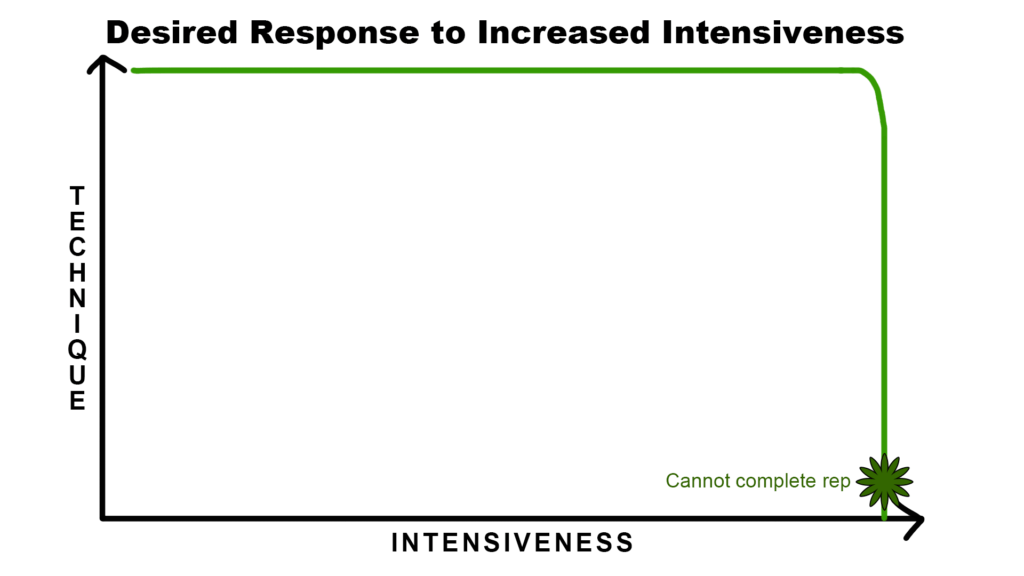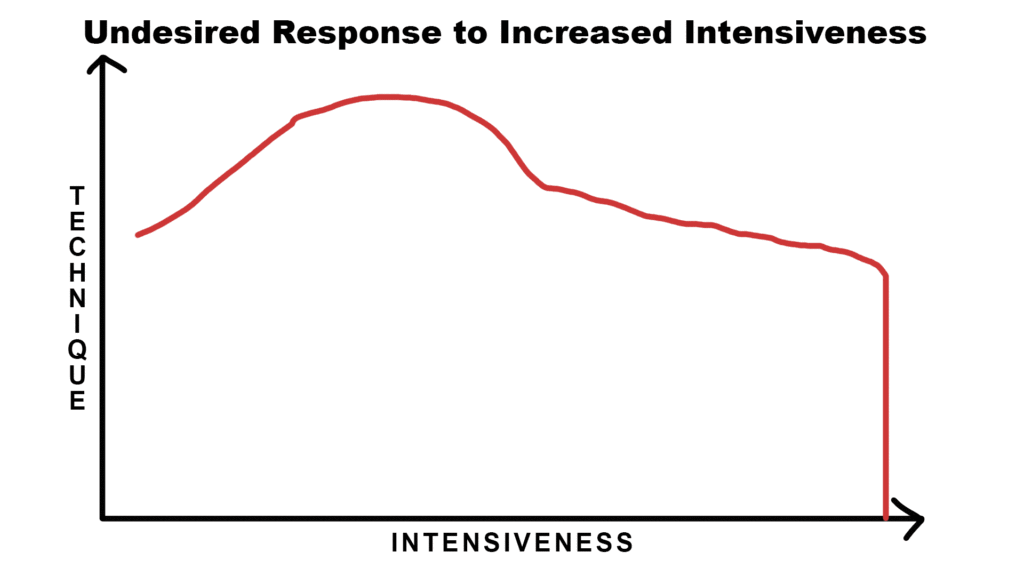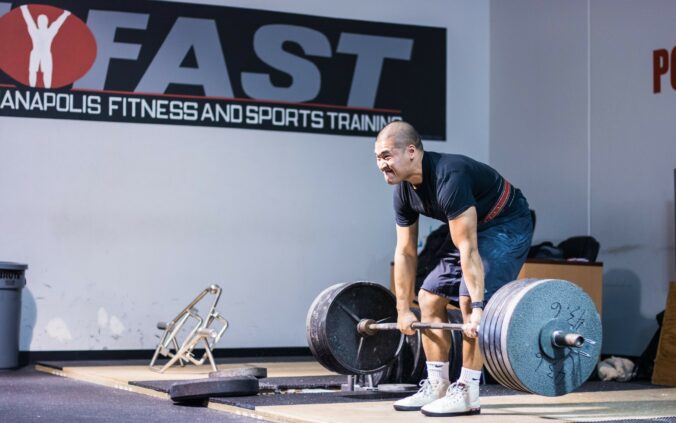“PRs aren’t supposed to look pretty.”
Is that true?
Am I supposed to look like a fidgety squirrel on all my heavy sets?
Are we doomed to biomechanical compensation every time we try to push strength?
What is training for?
I want to assert that most weekend warrior lifters have forgotten the purpose to training.
…just like I did.
Ego is the enemy
Lifting is full of ego. Personal records are addicting. You see yourself getting stronger. You feel like The Alpha. You get so excited that you think about throwing your head through the sheetrock.
This euphoria is what makes us lose our direction.
We end up spending our time testing strength instead of building it.
Frequency of testing
There’s something noble about pushing yourself to a PR every week. Nobody can argue that you aren’t trying hard. It takes guts to grind out one of those long reps.
But if you’re doing it every week, you’re only training one piece of strength — that absolute, 1RM piece of it. You’re not conditioning the connective tissue around it. You’re not getting technique practice at heavy weights. You’re not putting hardly any volume into building muscle.
And if you really are pushing to the max, your reps probably don’t look pretty. Technique breakdown is where people really start to feel the adverse effects of resistance training.
Technique-Intensiveness Curve
In an ideal world, our form wouldn’t degrade on our 10 out of 10 exertion sets.

The graph above illustrates this concept. Technique stays perfect until we cannot complete a rep.
But I’ve kept my eyes on the weekend warriors and amateur powerlifters that come through the gym, and what I see does NOT look like the green graph above. It looks more like the red graph below.

- Technique is actually lower with the lightest weights, attributed to an inability to overcome joint stiffness and control the center of mass
- Technique improves with moderate loads, attributed to increased proprioceptive feedback
- Technique dips at the first sign of fatigue, attributed to the desire to keep bar speed elevated
- Eventually, rep cannot be completed
Just to emphasize it, I’ve done all of these things. That’s why you’re reading this now. I’ve been thinking about this for a while now.
What motor pattern are you learning?
If you compromise your technique, you’re training that pattern. Is that what you want to look like on all your heavy sets? Do you think you’ll have more training setbacks? Do you think you’ll plateau earlier?
Yes, letting your body twist up absolutely makes you stronger in the moment. But remember we’re TRAINING, not testing. The goal is not to lift the most weight in training. The goal is to develop strength. To do that for a long, healthy career, you need to train great technique.
Lost technique is mental weakness
I want to point out one of the marks on the red, second graph above.
The third bullet talks about form degrading when fatigue is first detected.
I see this mostly in normal people. Not those people that are sick in the head masochists. They feel that the rep is getting challenging — muscles burning, breathing labored, losing their lifting rhythm — and they want to make all that pain go away.
But the secret to training your body well is that you have to be a little sick in the head.
You can’t shift and twist and writhe to get rid of the burning. You can’t keep the bar moving at the same speed for every rep. You’re SUPPOSED to get tired. That’s the whole point of lifting weights. So let it happen. And just keep your body centered. Not in a woo woo way, but in a literal, physical way. Don’t shift. Don’t squirm. Sit with the uncomfortable tension of strengthening, growing muscles.
You can still have goals in a training session
Yes, I think we should spend more time building strength and less time testing it. But that doesn’t mean you can’t push yourself. And it doesn’t mean you can have a attempted goal for each training session.
You need to think outside the box, though. It’s not always as simple as just doing more weight than last time, though that works for a while. You can also
- add more reps,
- add another set,
- decrease rest period,
- increase technique,
- increase total workout volume,
- or add in a pause or purposefully slow tempo.
Action steps
I’ve riddled some advice throughout this article. Hopefully you found one piece that really hits home.
To reiterate, I’m as susceptible to this technique degradation as anyone.
Do some of my reps look bad? Yes.
Do I shift when I squat? You bet.
But I can take this technique as a piece of information. If I’m compromising form, then the weight is getting too heavy. I stop using muscles, and start stabilizing with joints.
Then I remember that the reason I’m lifting weights is to get bigger and stronger. Not to do some weight that I have in my mind.
If I’m tired, I used less weight. But I prioritize technique.
Some final advice
- Don’t skip the light warm up sets. Always start with the empty bar.
- Get at least three warm up sets. Repeat a weight if you have to.
- When warming up, do enough to feel it, but not enough to get tired.
- Your warm up sets should look just as good as your working sets.
- Your working sets should look great.
- Remember that if you lose technique, you’re training yourself to lose technique.
- Remember the purpose of training is to build strength, not test it.
Like this article? Then you’ll love The Movement Seminar.

Add some color to this commentary.